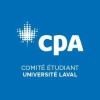
Using Preoperative Anxiety Score to Determine the Precise Dose of Butorphanol for Sedation
Preoperative AnxietyPrecise Dose of ButorphanolPre-operative anxiety usually lead to increased anesthetics during the surgery. The precise sedative requirement which can keep adequate sedative state and avoid adverse effects caused by excessive drugs still needs further study. Therefore, our purpose was to confirm the sedative effect of butorphanol and to explore the relationship between pre-operative anxiety and intra-operative butorphanol requirement to evaluate the precise sedative requirement which can keep adequate sedation for patients by pre-operative anxiety score.

Internet-delivered Cognitive Behavioural Therapy for Adolescents With Anxiety
AnxietyThe purpose of this study is to evaluate the effects of learning support and chat on treatment outcome in internet-administrated cognitive behaviour therapy (ICBT) for adolescents with anxiety.

Self-help Guided by Lay Providers for Anxiety in Older Adults
Generalized Anxiety DisorderFew older adults receive treatment for Generalized Anxiety Disorder (GAD) despite a high prevalence in this population and significant associated health care costs. Although older adults generally prefer psychotherapy to medication for help with anxiety, face-to-face psychotherapy is difficult to access for many of them. Psychological guided self-help (GSH), which patients use by themselves at home under the supervision of a licensed mental health provider (e.g., psychologist), has been shown to be effective. However, the capacity of our health care system to respond adequately to the mental health needs of seniors has been questioned and cost-effective solutions are required. Because the therapist's role in GSH is limited to supporting the patient, it is conceivable that this role could be assumed by trained and supervised lay providers (LP) instead of licensed providers. If this approach is effective, it could help provide many older adults with much needed mental health treatment at a lower cost. The main objective of this project is to evaluate the effectiveness of GSH guided by LP for GAD in older adults. Participants will be assigned randomly to an experimental group, which will receive treatment immediately, or to a control group whose treatment will be delayed. Data will be obtained through clinician evaluations and self-assessment questionnaires. They will include socio-demographic characteristics, symptoms of GAD, variables related to anxiety, such as depression and sleep difficulties, and participants' perception of treatment. For the experimental group, data collection will take place at four different times: before treatment begins, after treatment ends, and at 6 and 12 months after the end of treatment. Control group participants will be assessed on three occasions: before and after the waiting period and after receiving treatment. The efficacy of GSH will be established by comparing the change in the two groups on the main variables. We will also identify the characteristics of patients associated with improvement during treatment and document their perception of treatment.

Facing Fears by Focussing on Behaviour, Body, or Mind?
Social AnxietyAnxiety problems are a major concern of youth mental health given that the prevalence of anxiety disorders in Dutch adolescents aged 12 to 18 is approximately 10 percent. In this group, social phobia like speech or performance anxiety are among the most common. Intervention programs based on the principles of exposure-based Cognitive Behavioral Therapy (CBT) have proven to be the most effective and most applied in therapy for social anxiety among adolescents. Thus far, research has mainly focused on effectiveness of "intervention packages" consisting of multiple CBT elements (i.e., exposure plus cognitive restructuring and relaxation exercises). The most common CBT element in current intervention packages for anxiety in youth is exposure, which is often only applied after providing the child with cognitive restructuring (CR) and relaxation exercises (RE) as preparation for exposure. However, although most empirical evidence supports the value of the use of exposure, there is hardly empirical evidence for the additional value of CR or RE. In addition, it is unclear whether the combination of these elements with exposure is counterproductive compared to the use of exposure only. After all, without lengthening the treatment, the addition of CR and/or RE will leave the therapist and child with less time to spend on exposure exercises.This study proposes to evaluate the effectiveness of these three different types of CBT-elements in the treatment of speech/performance anxiety among adolescents.

Stepped-Care Cognitive-Behavioral Treatment for Youth With ASD and Anxiety
Cognitive Behavioral TherapyAutism Spectrum Disorder5 moreThis study implements a parent-led, flexible, individually-tailored cognitive-behavioral intervention for children with ASD and anxiety.

Exercise in Anxiety and Posttraumatic Stress Disorders
AnxietyAim: Aerobic and resistance exercise showed anxiolytic effects in clinical populations. Climbing could further enhance self-efficacy. Aim of the study is to examine whether climbing exercise and aerobic exercise, compared to social contact control, reduces symptoms of disease in out-patients with anxiety disorder (AD) and post-traumatic stress disorder (PTSD). Further analyses are aiming to reveal differences between climbing - and aerobic exercise. Design: Randomized controlled clinical trial Participants: Thirty out-patients diagnosed with International Classification of Disease-Version 10 (ICD-10) (F40, F41, F43.1) for AD or PTSD. Intervention: Out-patients will be assigned randomly to a climbing exercise group (a), aerobic exercise group (Nordic walking) (b) or social contact control group (c). Measurements: Primary outcome is symptom severity in AD or Post Traumatic Stress Disorders. Further secondary outcomes are evaluated by psychological questionnaires assessing depression, worry symptoms, quality of life, self-efficacy and affective responses. Metabolites of neurotransmitters, immune-activation markers and anthropometric data will be additionally provided as secondary physiological outcomes. Duration: Intervention duration is four weeks with 2 x 75 min for every group (climbing exercise, aerobic exercise, social contact control). Measurement points are set at the beginning (t1), at the end of the intervention (t2) and 3 (t3) and 6 (t4) months follow-up.

Attention Training for Underserved Youth With Anxiety
AnxietyThis study aims to test the efficacy and feasibility of administering a computerized attention training program targeting clinical levels of anxiety in Latino youth between the ages of 8-17. 52 youth from Imperial County, a rural and predominantly Latino region, will be randomized to receive either 1) a 12-session attention modification program (AMP) or 2) an attention condition program (non-active treatment). Clinical assessment of symptom severity will be conducted before, during, and after treatment. We hypothesize that at the end of treatment, children who receive the active intervention (AMP) will show (1) decreased attention bias to anxiety-related triggers using an independent measure of attention bias to assess change and (b) reduced anxiety severity. We also hypothesize that this study will be feasible, tolerable, acceptable, and safe in this underserved sample of Latino youth. This study is an initial step towards demonstrating the feasibility of implementing a novel computerized attention training program in anxiety in underserved community samples.

The Use of a FDA Cleared, Drug-free, Breathing System for Anxiety and Panic Disorders in Children...
AnxietyPanic DisorderThis study will test the efficiency of the Freespira Breathing System in youth.

Effect of Transportation Method on Preoperative Anxiety in Children
AnxietyChild BehaviorTo evaluate the effect of wagon for transporting vehicle instead of standard stretcher car for reducing preoperative children's anxiety.

Auricular Stimulation vs. Expressive Writing for Exam Anxiety
AnxietyTitle of the study: Auricular acupuncture (AA) vs. expressive writing for pre-exam anxiety - a randomised crossover study Study period: 04 / 2014 - 07 / 2014 Principal Investigator: Prof. Dr. T. Usichenko Department of Anaesthesiology and Intensive Care Medicine University Medicine of Greifswald Aim of the study: To investigate the anxiolytic effect of AA vs. expressive writing and vs. no intervention in students, passing the oral exams in anatomy at the University of Greifswald Design: Prospective randomised crossover trial Interventions: 1. AA using indwelling fixed needles, retained 24 h in situ 2. Expressive writing Number of volunteers: N = 40 Healthy medical students at the University of Greifswald Participants of the anatomy exams in spring/summer 2014 Without previous anxiolytic, sedative and analgesic medication No pregnancy or lactating Informed consent Outcome measures: Anxiety level Heart rate, blood pressure Salivary α-amylase
